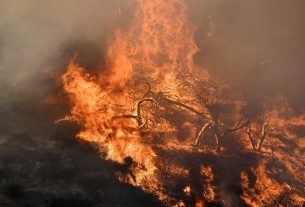The rapid increase in CO2 levels in the air threatens to severely degrade the cognitive abilities of students in the classroom. Results recently presented at the American Geophysical Union Meeting and which extend those obtained by previous work. In particular, they invite to take a more serious interest in this direct effect of CO2 in the light of the current context of increase.
When we talk about increasing the atmosphere’s carbon dioxide (CO2) content, the reflex is to consider climate impacts as a priority. Indeed, CO2 is a greenhouse gas. Also, any increase in its concentration tends to induce global warming. Warming deeply reorganizes the flows of matter and energy in the system. Hence an answer that is sometimes complex and difficult to pin down.
These various alterations worry because they threaten the goods, the stability even the survival of the human populations. These include the proliferation of intense heat waves, the worsening of droughts, heavy rains or the rise in marine submersions due to rising sea levels. These are well-known threats. However, they represent the indirect effects of CO2 on human populations.
CO2: direct effects on human metabolism
But CO2 also operates head-on. For example, with regard to ocean acidification. Another direct effect that is discussed much less is the impact on human health. After all, Homo Sapiens has never lived with such a high level of CO2. We can, therefore, suspect possible influences on his metabolism.
However, research has shown that when the amount of carbon dioxide increases in the blood (hypercapnia), in dioxygen decreases (hypoxemia). As a result, there is a reduction in brain excitability. In addition, blood richer in CO2 is more acidic. For these reasons, hypertension, confusion, drowsiness and anxiety are favored in an atmosphere rich in carbon dioxide.
Studies dedicated to this theme have been systematically carried out in indoor conditions. Namely, how the CO2 content of a room could alter human metabolism. Indeed, we know that a group of people breathing for several hours in the same room can lead to a CO2 level exceeding 1000 to 2000 ppm if no fresh air is brought in. Results that have opportunities in terms of building engineering. However, the connection with the community of climatologists remained anecdotal.
However, with the contemporary increase in carbon dioxide, outdoor air is less able to ventilate rooms. Even when the windows are fully open. It is, therefore, necessary to estimate to what extent this evolution affects the cognitive functions of human groups in indoor conditions.
Results that question
A work that was recently done by a team of scientists from the universities of Colorado and Pennsylvania. The experiment was based on an analytical model applied to the case of elementary school classrooms. Two scenarios were explored. In one, the global concentration of CO2 tends to stabilize by the end of the century. In the other, it continues to increase.
The results show that in the first scenario, certain cognitive abilities of students are reduced by 25% by 2100. In the second, they are reduced by 50%. The least we can say is that the numbers are very concerning. Especially when you know that they represent an average value.
“We conclude that indoor CO2 levels may indeed reach values harmful to cognitive abilities by the end of this century, and the best way to prevent this insidious consequence of climate change is to reduce emissions from fossil fuels, “reads the study’s summary.
In short, the direct impact of CO2 in the context of current environmental changes will have to be considered more seriously. Especially since future research is necessary because all the modalities of these influences are not yet well understood.
Finally, it goes without saying that if a systematic deterioration in cognitive functions were to become widespread, the situation would be very worrying. Thus, it is advisable to anticipate today the various possible scenarios. And consider how we can protect ourselves if we don’t manage to limit our greenhouse gas emissions.

Email: mary@satprwire.com Phone: +44 20 4732 1986
Marry is a fitness freak in every manner and gives proper care about her health and of others. She is probably the best person we have at Daily Research News for covering articles from the Health sector. If not at work, she can be seen drinking a cup of coffee.



